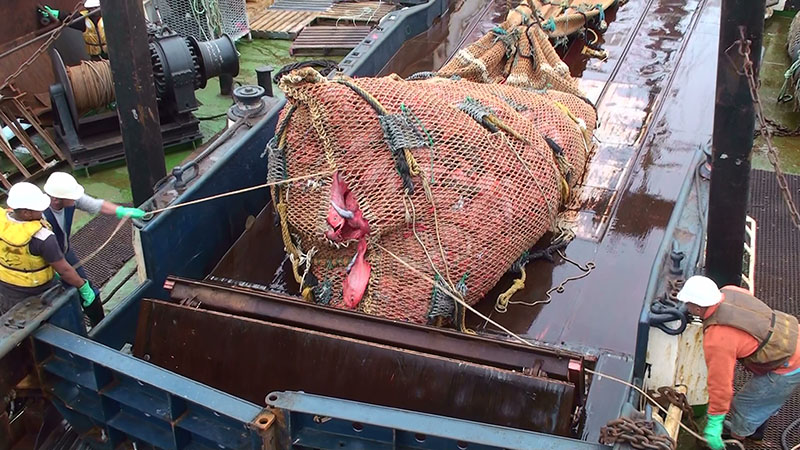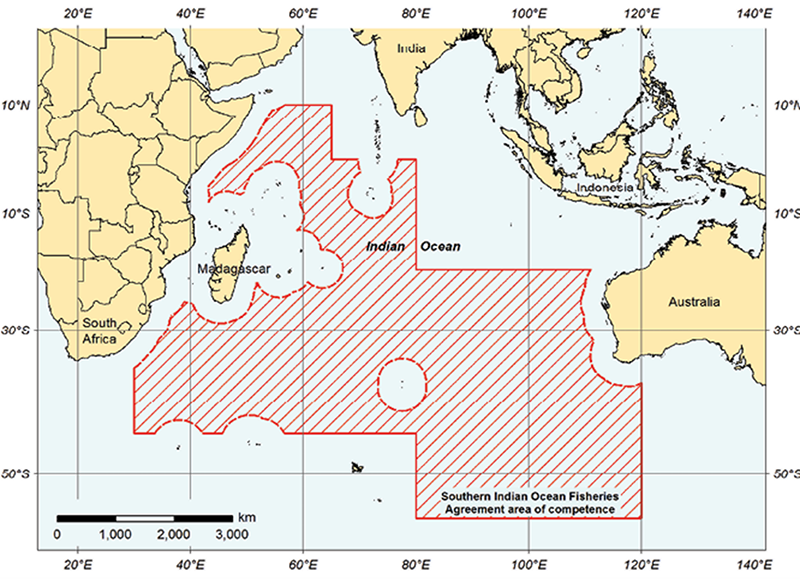The Southern Indian Ocean Fisheries Agreement (SIOFA) is a legally binding treaty that was put in place to ensure the long-term sustainability of non-tuna fishery resources in the Southern Indian Ocean.
SIOFA promotes the sustainable development of fisheries in the Southern Indian Ocean whilst taking into consideration the needs of developing States who border the Agreement Area, particularly focusing on the least developed amongst them and small-island developing States.
Species
SIOFA manages a variety of fishery resources including fish, molluscs, crustaceans and other sedentary species within the Agreement Area, but excluding highly migratory species and sedentary species subject to the jurisdiction of coastal States. SIOFA has conservation and management measures in place to protect species and ecosystems. These measures include applying restrictions and closing off areas for species and ecosystem protection.
Some of the main fish targeted in the SIOFA area include:
- Sauries (Scomberesocidae)
- Scads(Decapterus)
- Patagonian toothfish (Dissostichus eleginoides)
- Orange roughy (Hoplostethus atlanticus)
- Alfonsino (Beryx splendens)
- Oilfish (Ruvettus pretiosus)
See information on species managed by SIOFA.
SIOFA Area of Competence
As indicated in the above figure SIOFA covers the high seas, south of 10° north and north of 60° south between Eastern Africa and Western Australia.
SIOFA is next to the convention areas of:
- the Commission for the Conservation of Antarctic Marine Living Resources in the south
- the South Pacific Regional Fisheries Management Organisation in the east
- the South East Atlantic Fisheries Organisation in the west.
Australia’s role and highlights in SIOFA
Australia promotes strong environmental standards for fishing on the high seas through:
- Participating in the development of agreements for the international management of non-highly migratory fish stocks.
- Working with other SIOFA participants to protect vulnerable marine ecosystems.
The Australian industry works through the Southern Indian Ocean Deep-sea Fishers Association (SIODFA). This is an industry coalition which represents the interests of deep-sea fishing operators of the southern Indian Ocean and participates in SIOFA with observer status. Operators are from Australia, Japan and the Cook Islands.
Australian industries have been fishing in the area since the mid-1990s. Southern Indian Ocean fish stocks are important to the Australian fishing industry and responsible management must be ensured. See more about Australia’s fish status stocks.
SIOFA also manages a high seas portion of a population Patagonian toothfish. The majority of this population occurs within Australia’s Heard Island and Macdonald Islands exclusive economic zones. Australia places a high priority on ensuring that the population that occurs in SIOFA is managed to comparably high standards.
As a contracting party to SIOFA, Australia can:
- Directly influence the development of regional conservation and management measures, such as measures establishing a compliance monitoring scheme and high seas boarding and inspection procedures that enable us to combat illegal, unreported and unregulated fishing.
- Ensure that vulnerable marine ecosystems are protected, consistent with our commitments to the United Nations General Assembly
- Ensure regional measures are compatible with our domestic management arrangements
- Secure access for the Australian fishing industry.
- Australia has also played a leadership role by Chairing the Scientific Committee for 5 years and Chairing the Meeting of the Parties for 2 years
- See more information in the ABARES Fishery Status Reports.
SIOFA history and membership
SIOFA was signed in Rome in July 2006. It came into effect on 21 June 2012, holding the first Meeting of the Parties in Australia in October 2013. The second Meeting of the Parties was held March 2015 in Mauritius where it was decided the SIOFA headquarters would be located on the French Island of Réunion. Mauritius host the meetings every second year, rotating between other parties.
SIOFA currently consists of ten Contracting Parties, one Participating Fishing Entity and one cooperating non-Contracting Party. Four countries have signed but not yet ratified the Agreement.
See more on the history and full list of participants to SIOFA.
Meetings
SIOFA meets each year to discuss:
- the state of fishery resources
- promoting research and cooperation
- adopting recommended international minimum standards for fishing
- developing rules and procedures for monitoring vessel compliance
- developing measures to prevent, deter and eliminate illegal, unreported, and unregulated fishing.
SIOFA also holds annual meetings of its subsidiary bodies, including its Scientific Committee and Compliance Committee.
See more on current and upcoming SIOFA meetings.


